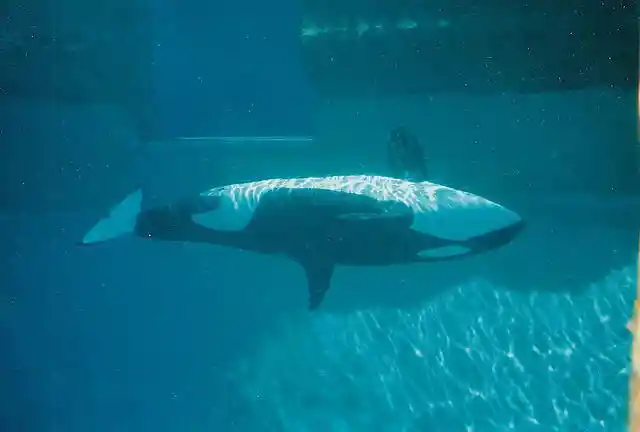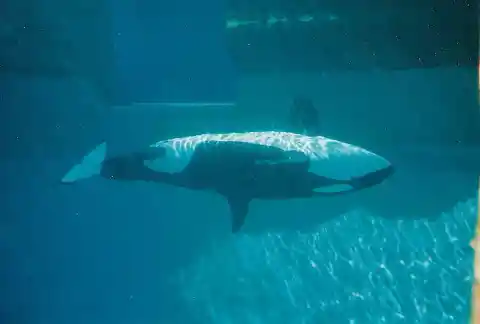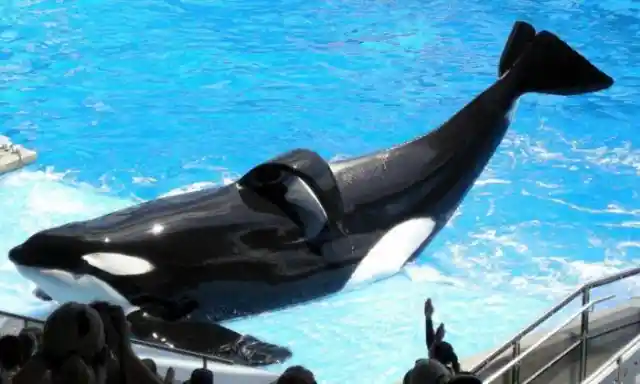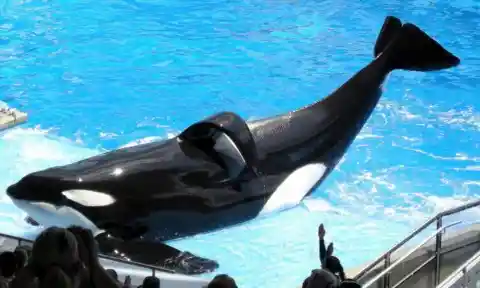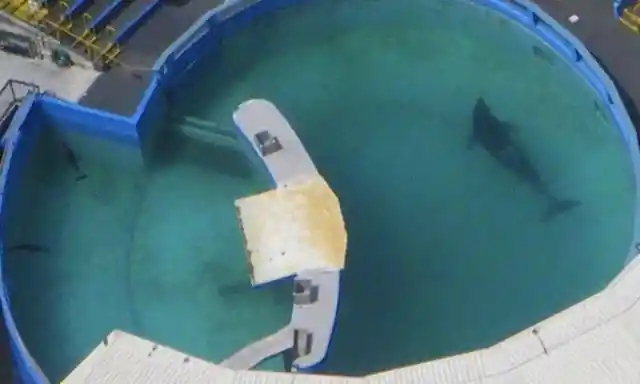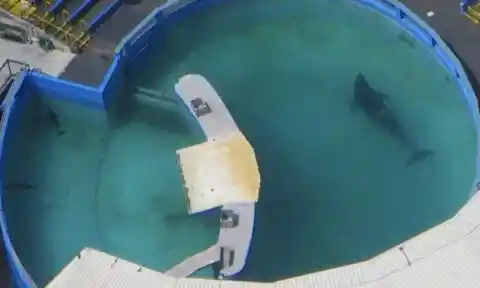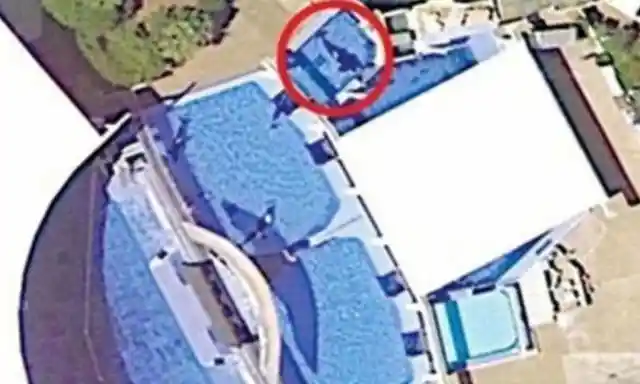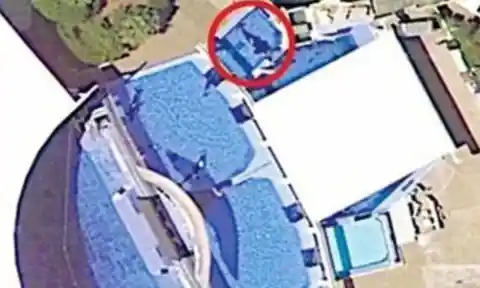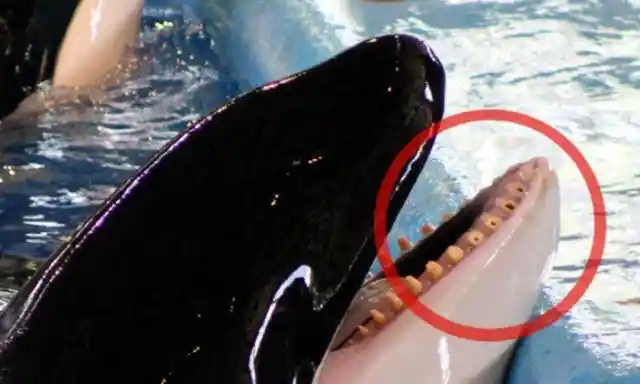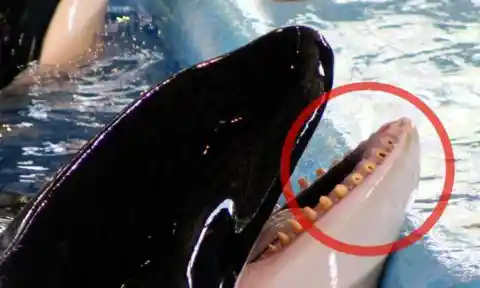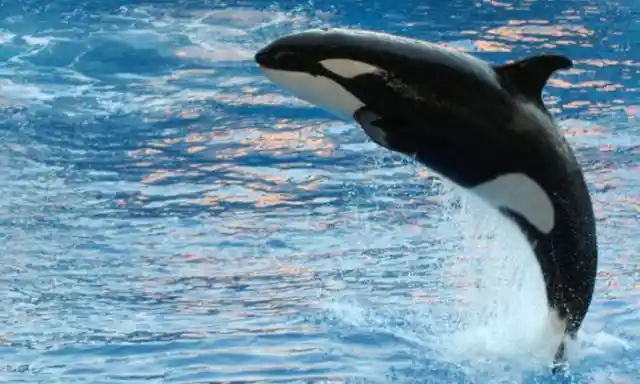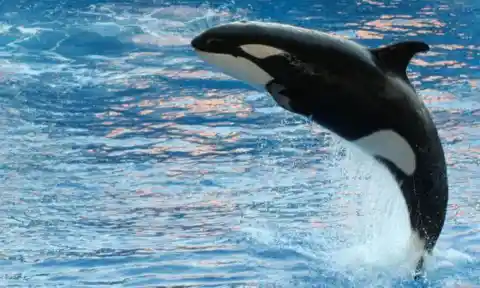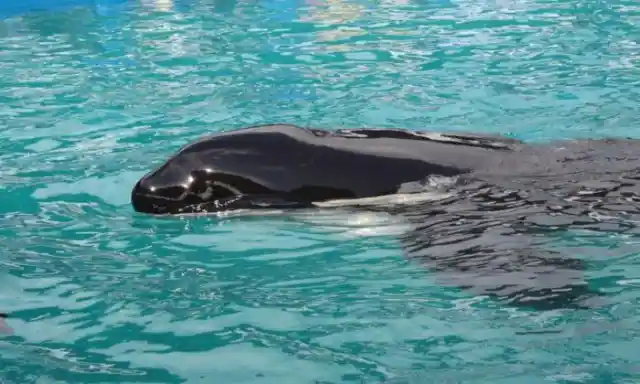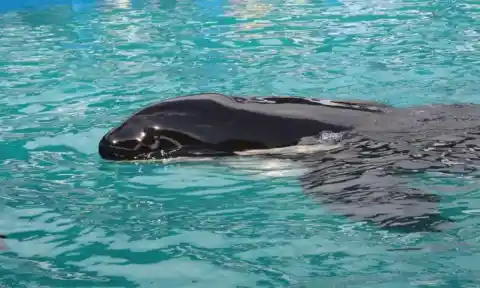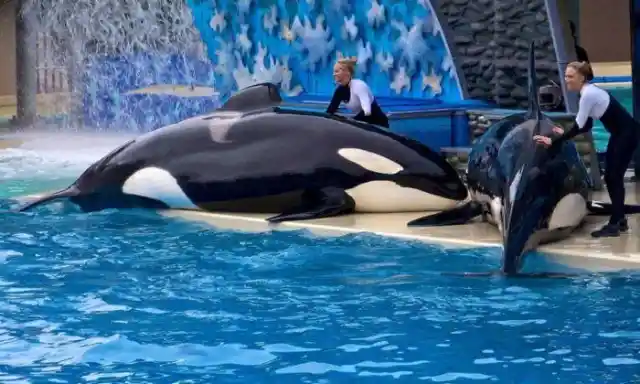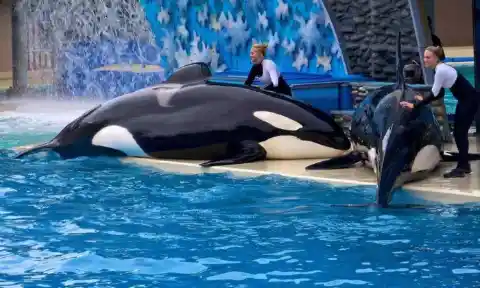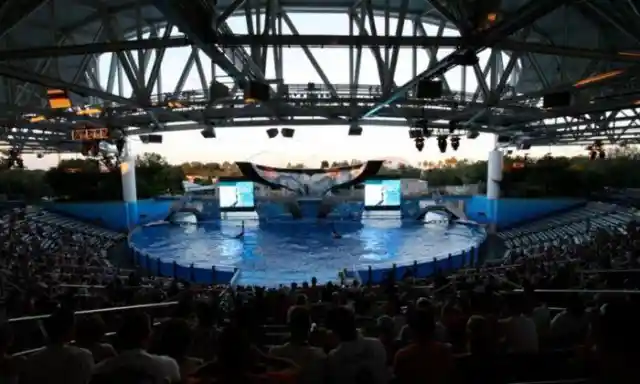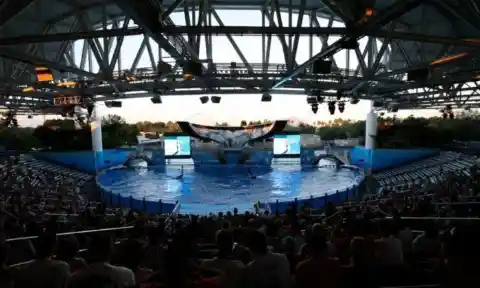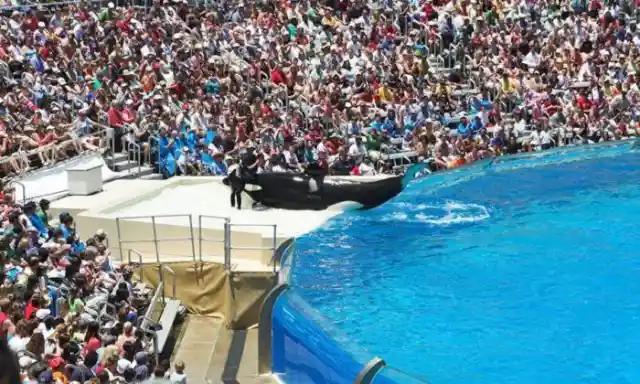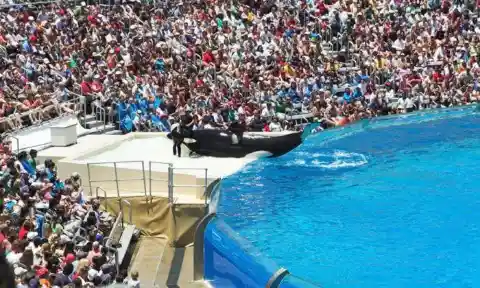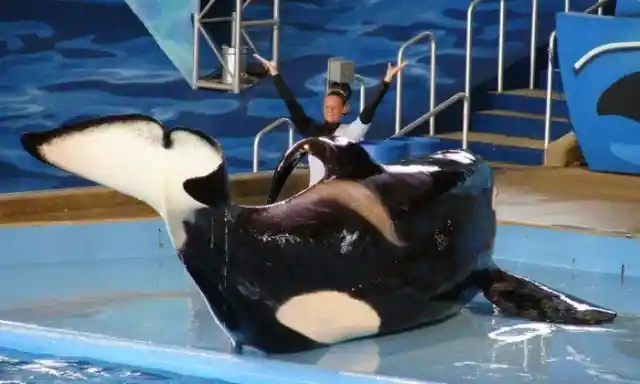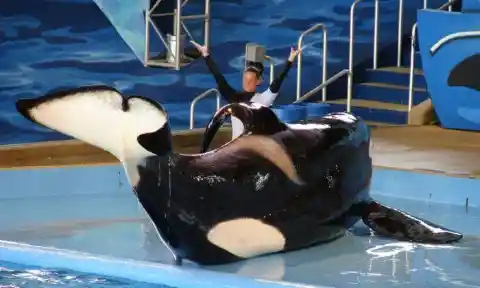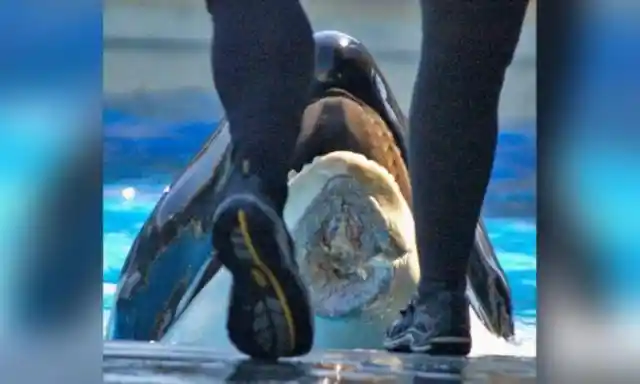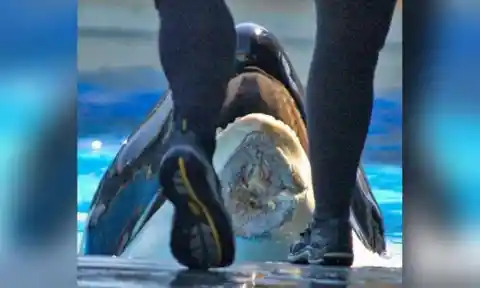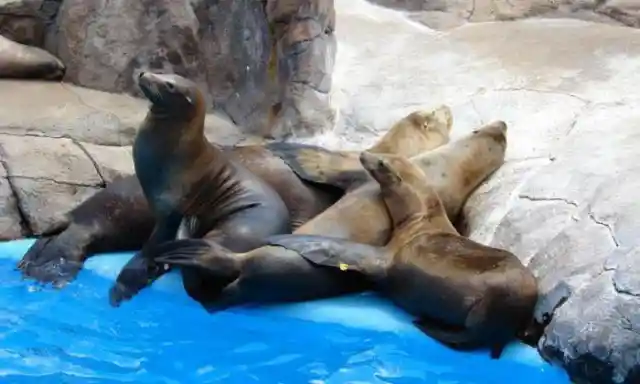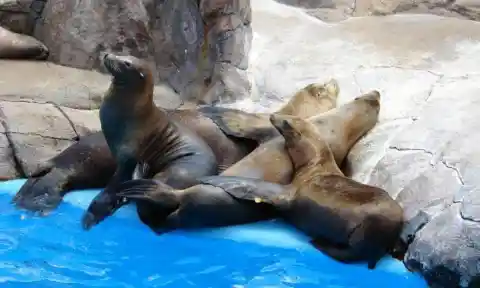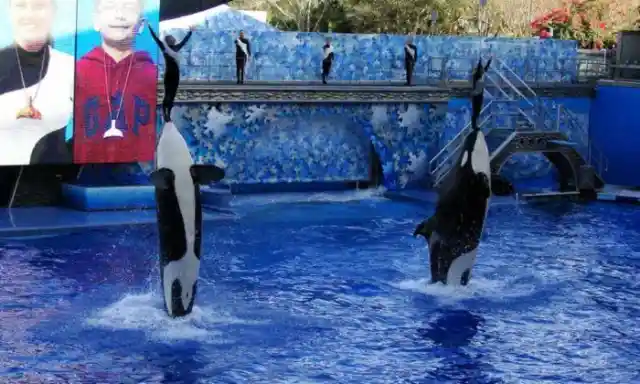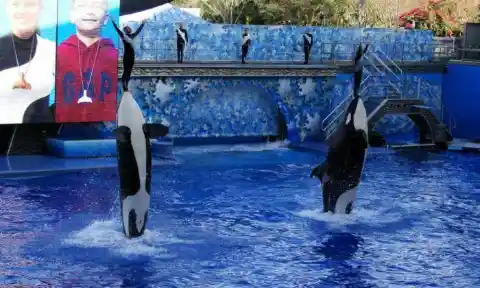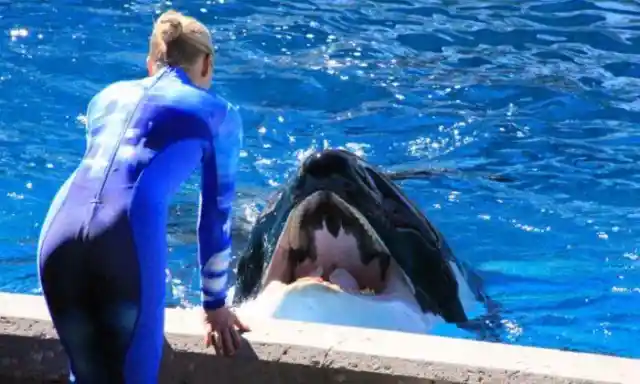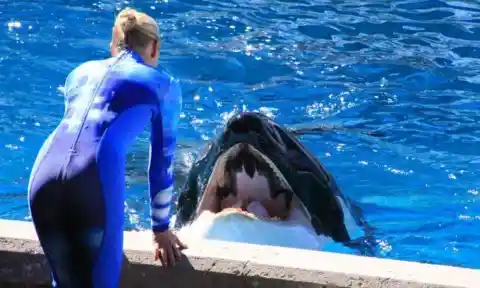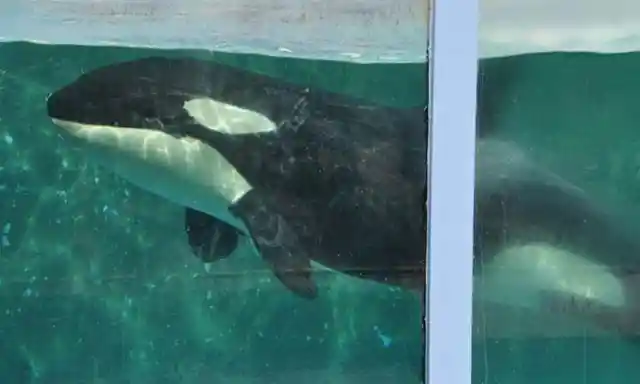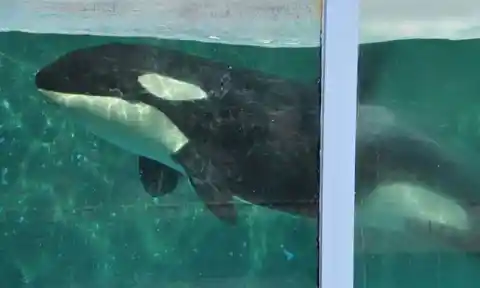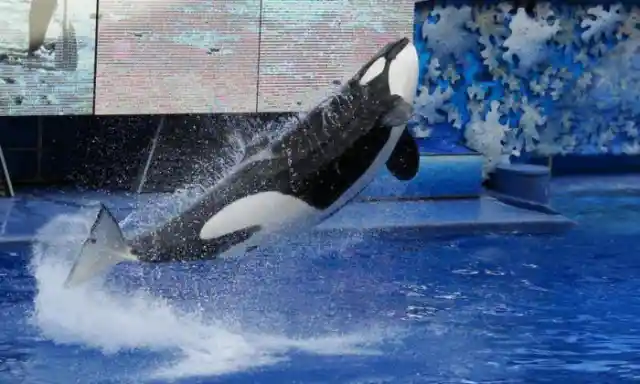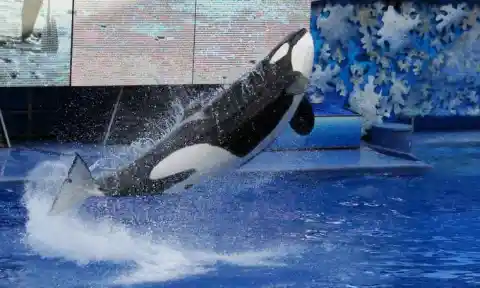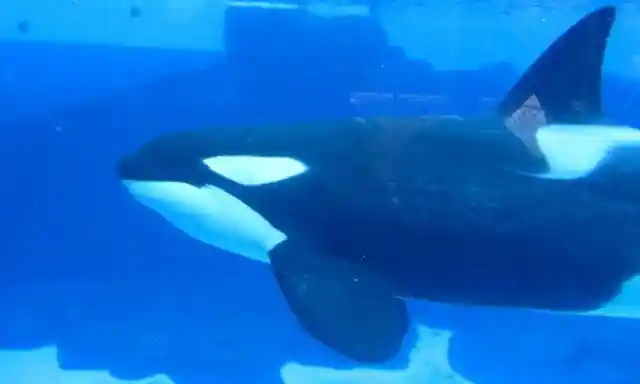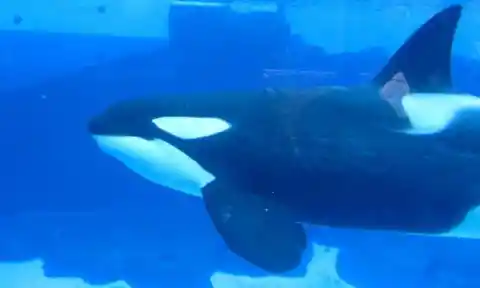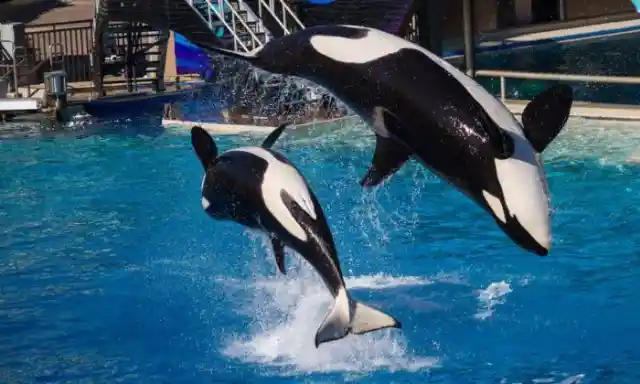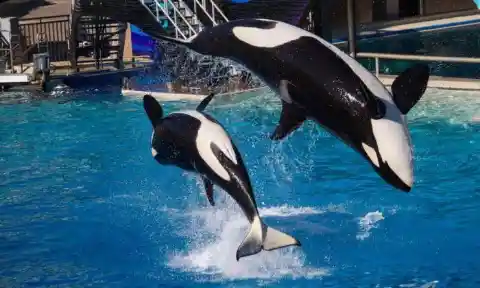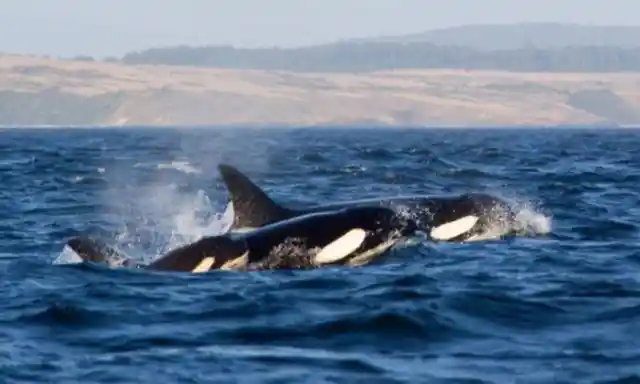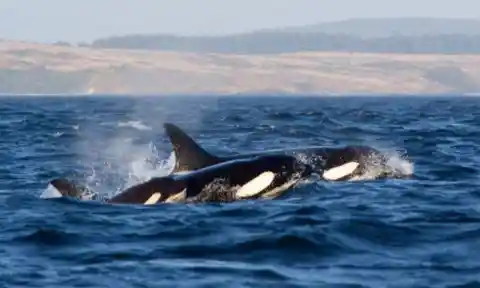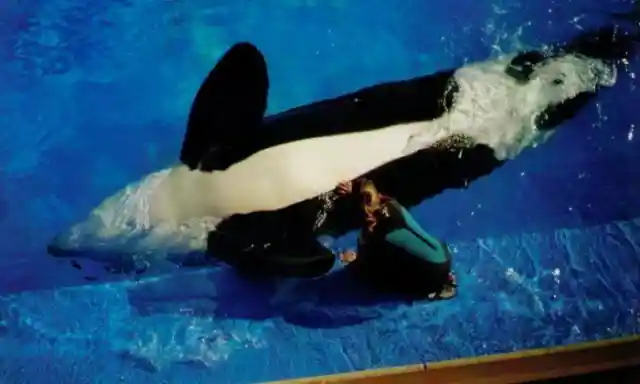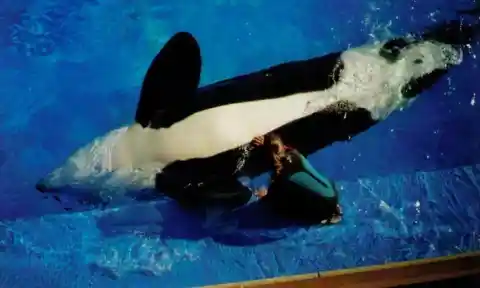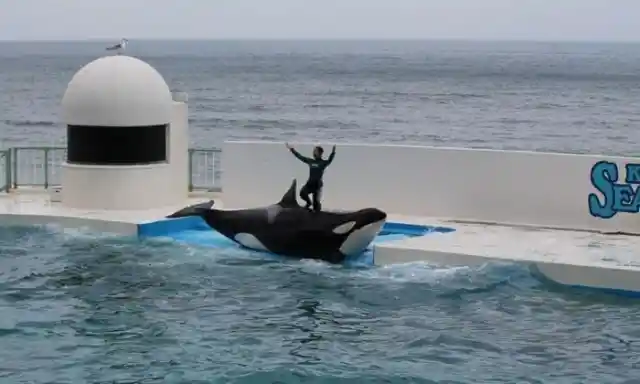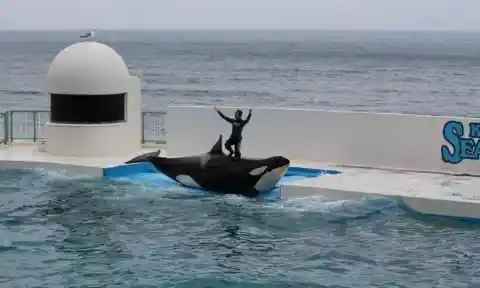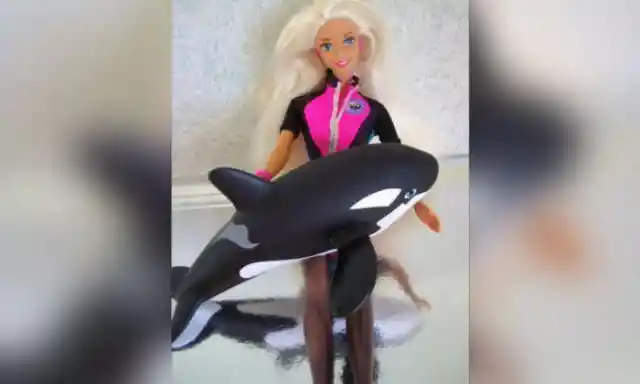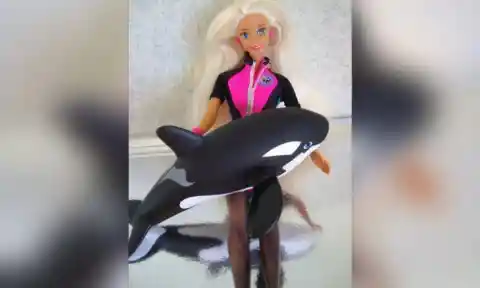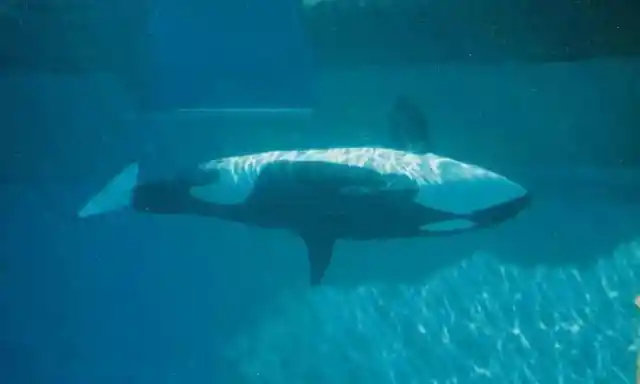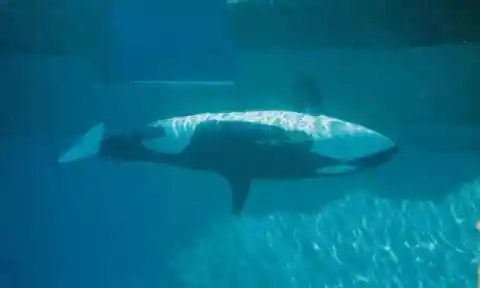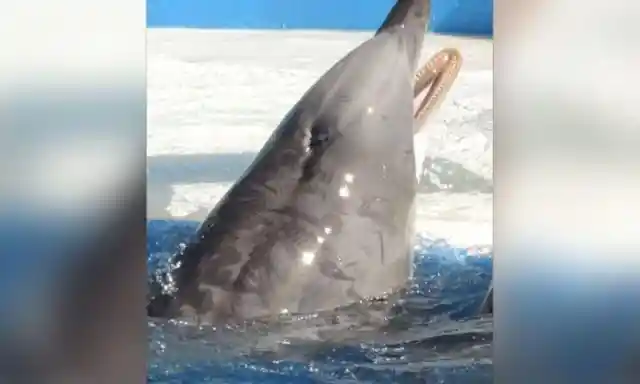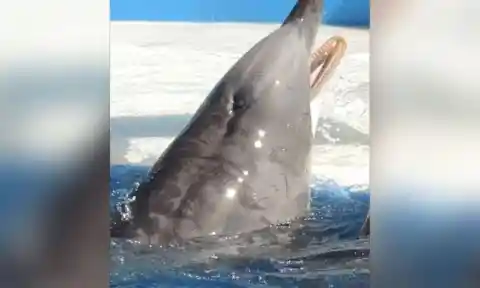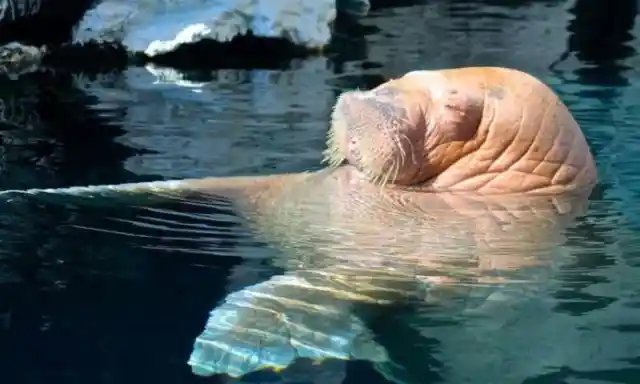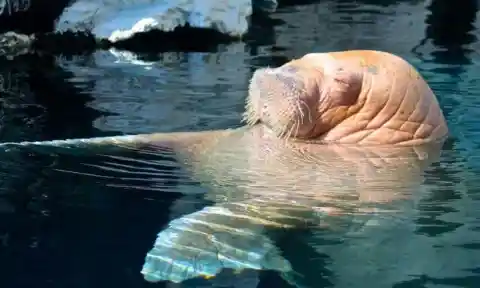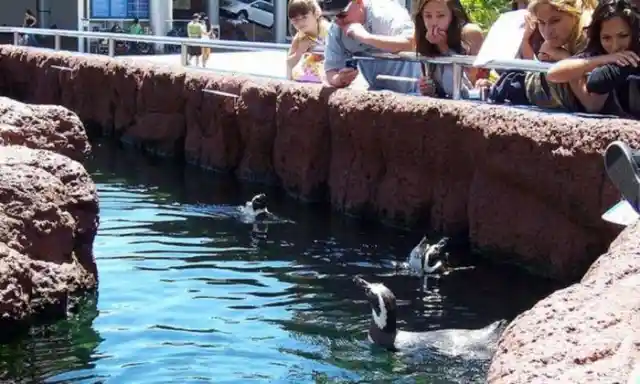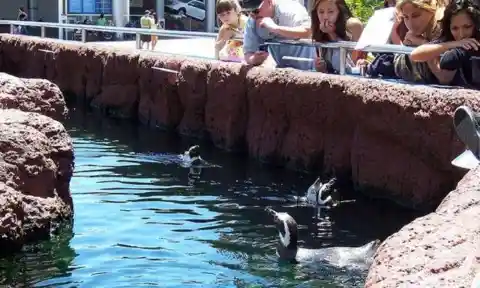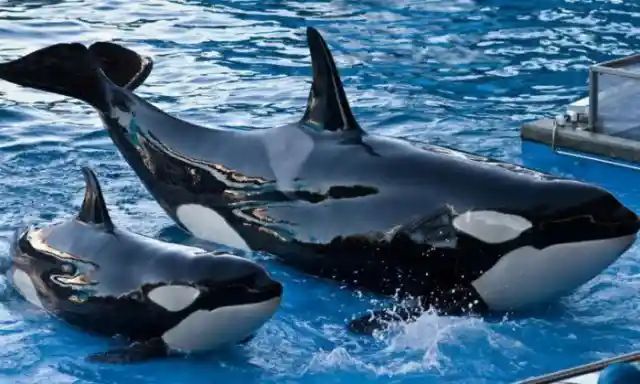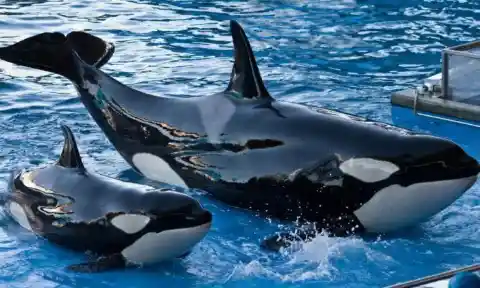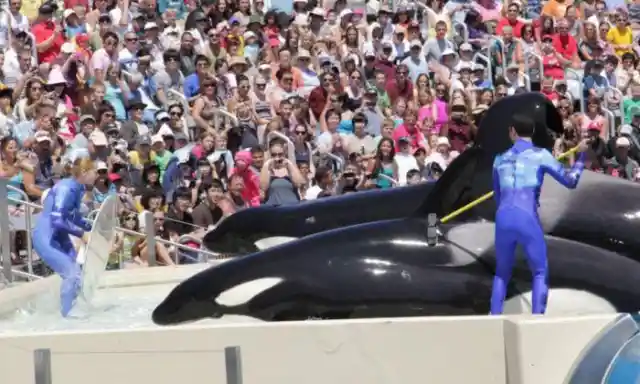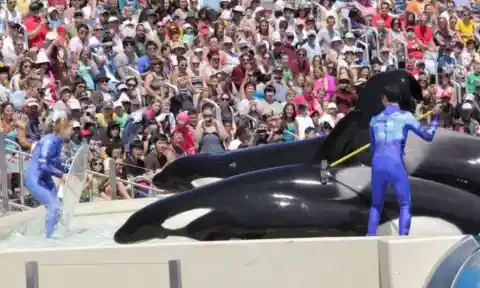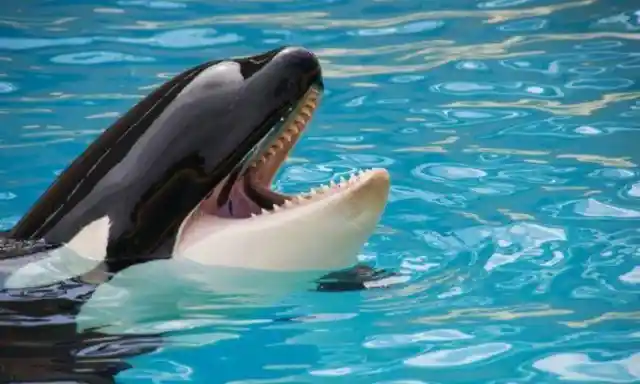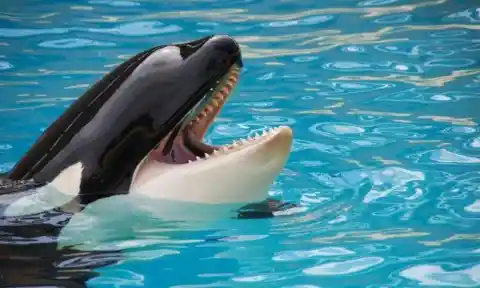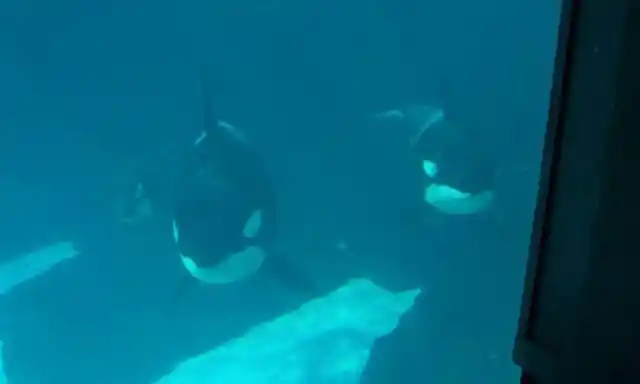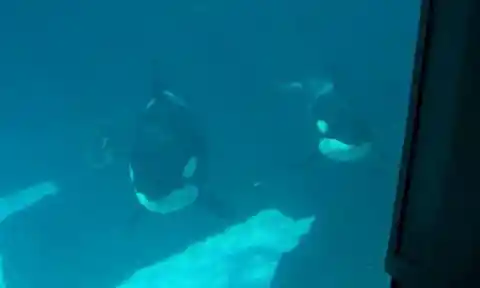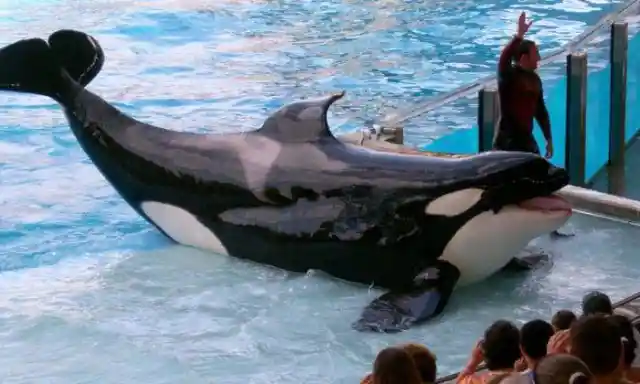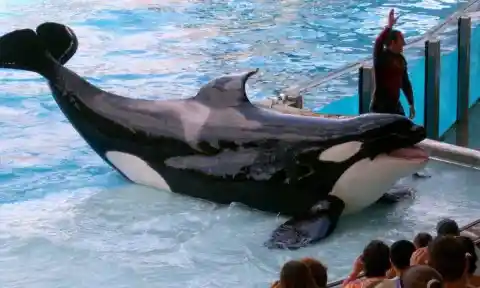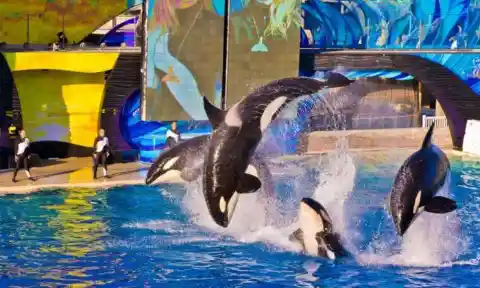When Animals Act Out Of Character
SeaWorld Entertainment positions itself as a place where "imagination meets nature," and for half a century, parkgoers happily visited to see animal performances and exhibits. Stories and reports in recent years have made for sharp turn of events, however. Read on to learn about the truth behind the amusement parks and what they're doing to change their image.

Source: Peta
Animals have exhibited strange behaviors during performances as well as during downtime between shows. Employees have prepared statements that assure audiences that the animals are practicing "natural behaviors." Food Deprivation

Source: Flickr
Former SeaWorld trainers have anonymously reported that food deprivation was used as a training tactic at the parks. Keeping the animals a bit hungry helped encourage them to perform for food rewards.
Fatal Consequences
Source: Flickr
Tilikum in particular has been linked to the deaths of two trainers, Keltie Byrne and Dawn Brancheau. After 33 years in captivity, it shouldn't be a surprise that animals suffer from stress and health issues. Pictured here is Tilikum in 2009 with a collapsed dorsal fin—a clear sign of an unhealthy and stressed orca.
Shortened Lifespans

Source: Flickr
Orcas in the wild live for many decades. Wild males have a life expectancy of 60 to 70 years; females can live to be between 80 and 100 years old. In captivity, however, these life expectancies shorten to just 13 years.
Too Close For Comfort
Source: The Dodo
Orcas swim up to 100 miles each day in the wild.
In captivity, though, these killer whales live out their days in tanks that are nothing more than a tub of water, considering their size.
No Room To Move
Source: The Dodo
Orcas would have to swim over 1,000 laps around these tanks or 3,000 lengths back and forth in order to reach the levels of physical activity which they'd practice in the wild.
Pictured here is a holding tank that's barely the length of the whale itself.
Gnawing Down Their Teeth
Source: SeaWorldOfHurt.com
When orcas in captivity are stressed, bored, or anxious, they'll gnaw at the iron bars and concrete pieces within their tanks.
This leads to broken and worn down teeth.
Shallow Waters
Source: Flickr
In the wild, orcas usually dive to depths of 328 feet, and they can swim as deep as 850 feet under water.
The deepest tanks at amusement parks, though, go only 40 feet down.
Covering Sunburns
Source: SeaWorldOfHurt.com
Wild orcas are able to dive deep into the ocean to shield themselves from the sun's rays. In captivity, though, orcas have no access to shade, so they end up with severe sunburns.
Park staff use black zinc oxide to cover up these burns.
Drug Treatments
Source: Flickr
Reports released in 2014 showed that SeaWorld administered anti-anxiety drugs to reduce stress in their animals. Animal advocates say that their captive quarters are the source of this stress.
“They do not cope with being kept in these tanks. They survive to some degree, but they don’t thrive to any degree,” Ingrid Visser said in an interview.
Trainers Don't Need Degrees
Source: Flickr
College degrees are preferred for trainers, but they aren't required.
The major requirement is experience with animals, and trainers are required to have SCUBA and CPR certifications.
Attendance Is Down
Source: Flickr
Upon the release of Blackfish in 2013, SeaWorld parks have seen great decreases in attendance.
Visits are down 13% and the parks experienced over $15 million in losses within 2014's first quarter.
OSHA Citations
Source: Flickr
The Occupational Safety and Health Administration (OSHA) issued four citations to SeaWorld San Diego in April 2015.
The citations, which criticized SeaWorld's workplace standards as unsafe, were paired with a fine of over $25,000.
Protests Worked
Source: MajorTen.com
In response to many protests, Joel Manby, SeaWorld’s chief executive, announced that the San Diego park would end its “theatrical killer whale experience” by the end of 2016.
He said the company will replace the show with an experience focused on the whales' natural environments.
Trainer Injuries
Source: Wikipedia
Corporate incident reports have revealed over 200 serious injuries suffered by SeaWorld trainers.
Incidents range from bites and bruising to severe internal bleeding and death.
Animal Injuries
Source: SeaWorldOfHurt.com
Photos of a jaw injury suffered by 11-year-old Nakai circulated the web in 2012.
SeaWorld stated that the injury was caused by a collision with the tank; online reports, however, suggest that the injury resulted from a confrontation with other orcas.
Infiltrating PETA
Source: Wikipedia
SeaWorld released a February 2016 statement in which they admitted to infiltrating animal rights organizations, including PETA.
The SeaWorld CEO released the information during a conference call with investors.
By The Numbers
Source: Wikipedia
61 orcas currently live in captivity worldwide. 28 were captured in the wild and 33 were born in captivity.
These killer whales live in at least 14 marine parks in 8 different countries.
Not A Point Of Pride
Source: Wikipedia
SeaWorld states on their website that Tilikum was the largest mammal living in captivity.
One would imagine that this isn't really boastworthy at least 164 orcas have died in captivity, as well as 30 miscarried or stillborn calves.
Stereotypy
Source: Wikipedia
Tilikum and other captive animals exhibited stereotypy, a common behavior involving repeated pacing, swimming, or rocking.
These are movements with no goal or useful function, and they don't appear in animals living in their natural habitats.
Tilikum's Death
Source: Wikipedia
Tilikum died in March 2016 at 35 years old. He had suffered from a deadly, incurable strain of lung bacteria.
"It’s important to remember that Tilikum lived a long and enriching life while at SeaWorld and inspired millions of people to care about this amazing species," SeaWorld wrote on their website.
Unnatural Behavior
Source: Flickr
In the wild, orcas never stop moving—even when they're resting, they slowly swim forward. In captivity, however, they spend hours lying motionless in their tanks.
This is unnatural behavior and it's surely linked to their shortened life expectancy in captivity.
Raised In Captivity
Source: Flickr
SeaWorld began artificially inseminating its female orcas in 2000.
Many of the newborn orca calves were quickly separated from their mothers, leading to depressive behavior in mothers and unhealthy adjustment in calves.
Wild Captures
Source: Flickr
At least 156 orcas have been taken into captivity from the wild since 1961.
They weren't all captured by SeaWorld, but the demand is surely the result of their particular brand of entertainment.
High Chlorine Levels
Source: Wikipedia
There are multiple stories online describing alarmingly high levels of chlorine in SeaWorld tanks.
Animals and trainers alike have suffered chemical burns as a result of highly chlorinated water.
Cancelled Shows
Source: Wikipedia
Musicians and groups have played plenty of shows at SeaWorld over the decades, but in the past few years, various acts have cancelled shows.
These artists include Willie Nelson, the Barenaked Ladies, The Beach Boys, and Cheap Trick.
Lawsuits
Source: Pixbay
Three lawsuits alleging false advertising by SeaWorld were recently thrown out of court.
SeaWorld spokesman David Koontz said that "SeaWorld and other science-based organizations are part of the solution, not the problem."
Brands Distancing
Source: Flickr
Brands including British Airways, Virgin America, and Southwest Airlines have severed ties with SeaWorld.
Toy manufacturer Mattel even ceased production of their SeaWorld Barbie in 2015.
Gathering Sperm
Source: Flickr
Artificial insemination at SeaWorld involves literally masturbating male orcas in order to collect their sperm.
This has only resulted in two successful births over the years.
Aggression
Source: SeaWorldOfHurt.com
Orcas and even dolphins have been known to fight and bully their companions in captivity.
Scratch marks and scarring are among the more common injuries.
Student Protests
Source: Change.org
Even students across America are protesting SeaWorld's treatment of its animals. Phoebe Goldstein is a high schooler whose petition asked SeaWorld to end orca shows in their parks.
Her petition alone received over 62,000 signatures!
Walruses, Too
Source: Pixabay
Obie was a walrus who suffered greatly from being kept captive. He commonly displayed signs of stress and alarmingly regurgitated his food.
Obie died in 2015 at 28 years old.
Unprotected Penguins
Source: MajorTen.com
Penguins in the Magic Landing enclosure aren't shielded from park visitors.
As such, visitors are able to throw refuse into their enclosure, leading to injury and health issues for the birds.
No More Breeding
Source: Flickr
After all of the media and citizen attention following the release of Blackfish, SeaWorld finally announced the end of their orca breeding program in March 2016.
Discrimination Allegations
Source: Flickr
SeaWorld faced an audit and investigation by the U.S. Department of Labor after allegations of unfair hiring practices.
Inspectors asserted that over 1,000 qualified African-American and Hispanic job applicants were turned down for employment.
Gelatin
Source: Max Pixel
In order to keep its animals hydrated, SeaWorld includes high amounts of gelatin products in their diets.
Tilikum weighed nearly 12,000 pounds and consumed up to 83 pounds of gelatin every day.
Family Issues
Source: Wikipedia
A 2015 video release showed an orca apparently refusing to feed her young calf. A park visitor spotted the mother ignoring her calf's attempts to nurse and filmed the interaction.
Park security had her removed.
Going Forward
Source: Flickr
SeaWorld denies many of these allegations and continues to promote itself as an educational and caring facility.
They operate blogs and webpages that tell stories of animal rescues and welfare initiatives.
Objections To "Blackfish"
Source: Wikipedia
"Blackfishis propaganda, not a documentary," SeaWorld writes on their website. "Its two central premises are wrong...
Nothing could be further from the truth." SeaWorld describes the documentary as "false and misleading."
